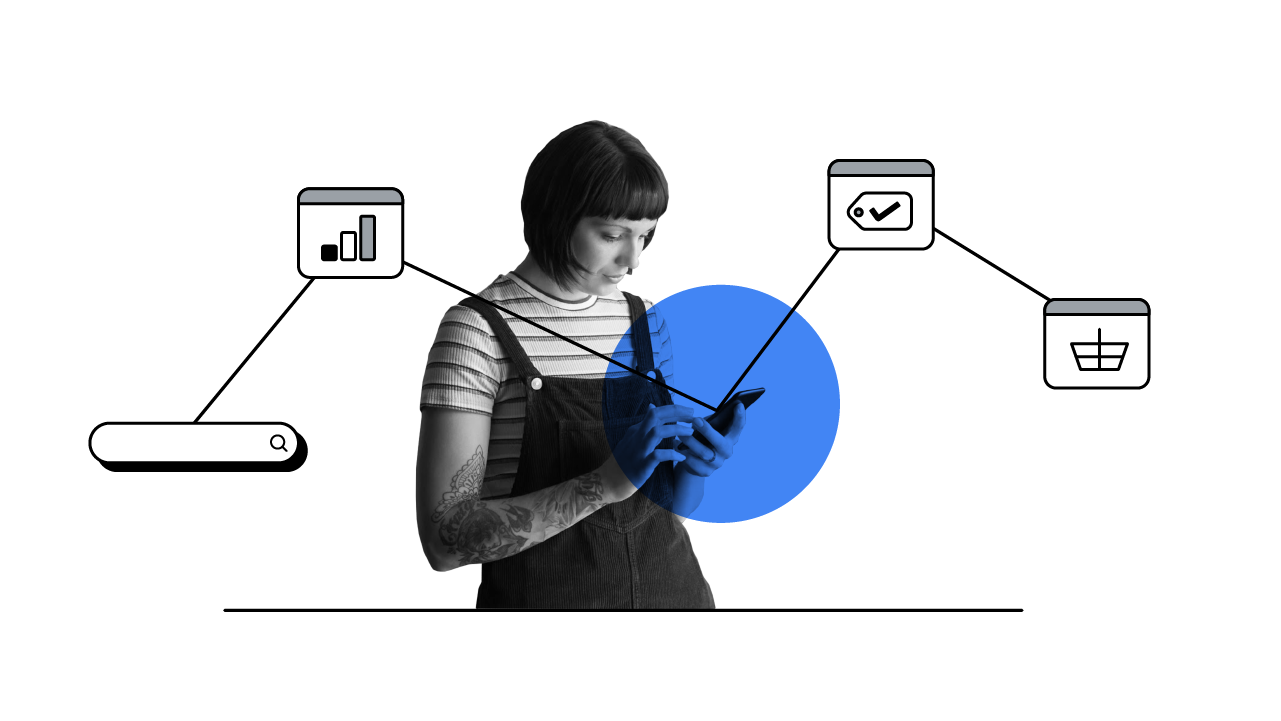A big shift in the financial services industry is well underway. Consumer trust — the primary driver of brand preference — is no longer dependent on institutional legacy or brick-and-mortar footprint. Trust is now placed in companies that prioritise a user-first digital experience, invest in product innovation, and lead with transparency. As a result, digitally native financial brands are well positioned to meet these new consumer expectations,1 with 78% of financial decision-makers across the U.S. having already adopted a disruptor brand.
Trust is now placed in companies that prioritise a user-first digital experience, invest in product innovation, and lead with transparency.
This year’s stay-at-home orders have only accelerated the need for seamless, convenient digital experiences. In fact, searches for “mobile banking app” have grown globally by more than 100% year over year, and time spent in finance apps grew by 55% in the first quarter of this year.2 Winning this game early is critical, with word-of-mouth from early adopters leading to viral exposure and organic lift, as they are 1.6X as likely to be a trusted source of financial advice to their friends and family compared with other consumers.3

To build upon this momentum, the savviest players are embracing innovation and evolving their growth philosophy. The emerging winners in this race roll out cohesive digital strategies across web and app channels by putting customer behaviour first and staying fluid to quickly intercept changes in consumer needs. Here are lessons from two key players who have seen success in their marketing approaches.
Stay fluid to meet changing consumer demand
Founded as a traditional bank in Mexico, Grupo Financiero Actinver wanted to engage young, first-time investors with little knowledge of investing. The bank’s marketing team knew its new customers would be digital natives and expect a rich, seamless app experience. When Actinver built its financial services app Dinn in 2018 for this next generation of customers, it needed to find a way to scale. It leveraged Google’s automated acquisition tools, optimising its investment to reach users more likely to become end customers by targeting lower funnel actions.
With this influx of new users, Dinn sought to learn more about its customers and their preferences, including indicators for user churn. Using Firebase Cloud Messaging, Dinn was able to better understand its users’ journey through the funnel, reducing churn and increasing its quarter-over-quarter conversions by 300%. Equipped with insights, Dinn pivoted its acquisition strategy to target new users and more than double its user base. Putting digital automation at the forefront of its marketing strategy provided Dinn the ability to remain agile and react in real time to shifting consumer needs.
Let your measurement strategy guide the path forward
Greenlight is a financial education app for kids that lets parents manage their allowance and monitor spending while teaching them the basics of personal finance. The company has invested heavily in data infrastructure, user analytics, and decision-making tools, which has allowed it to efficiently scale up and fine-tune its growth investment. Buoyed by a robust testing culture, Greenlight invests heavily in user acquisition to scale.
Once we had the infrastructure set up correctly, we could iterate our campaigns in real time, testing new events, testing new creatives, or even pushing or pulling on budget pace.
Establishing privacy-safe measurement infrastructure before ramping up user acquisition is part of what makes Greenlight so successful. By leveraging Google Analytics for Firebase, its primary measurement platform, Greenlight has full control over how data is collected, stored, and used, making it easier to comply with privacy regulations.
This cohesive measurement strategy helped Greenlight benefit from enhanced performance with Firebase bidding. In addition, the growth team at Greenlight accessed deeper insight into customer behaviours and identified the actions that matter most in the user journey, such as completing user registrations, all with the peace of mind that comes with having more control over data. With the adoption of Google Analytics for Firebase and Firebase bidding, Greenlight steered its campaigns toward its highest value users, resulting in 153% uplift in conversions.
“With App Campaigns, once we had the infrastructure set up correctly, we could iterate our campaigns in real time, testing new events, testing new creatives, or even pushing or pulling on budget pace,” said T.C. Jennings, performance manager, paid media at Greenlight.
No longer a novelty, a user-first app experience is now a must-have for both new, digitally native entrants and legacy financial brands. As these examples demonstrate, reaching the next generation of customers requires a deep focus on measurement and analytics, as well as a fluid user acquisition strategy designed to respond to the evolving consumer needs and industry shifts.






